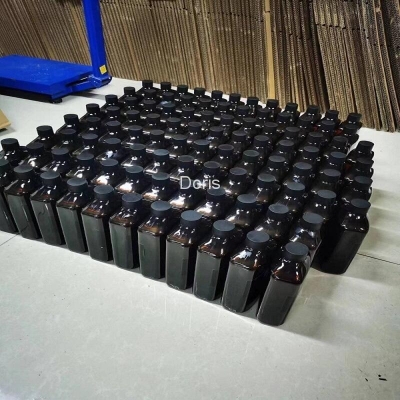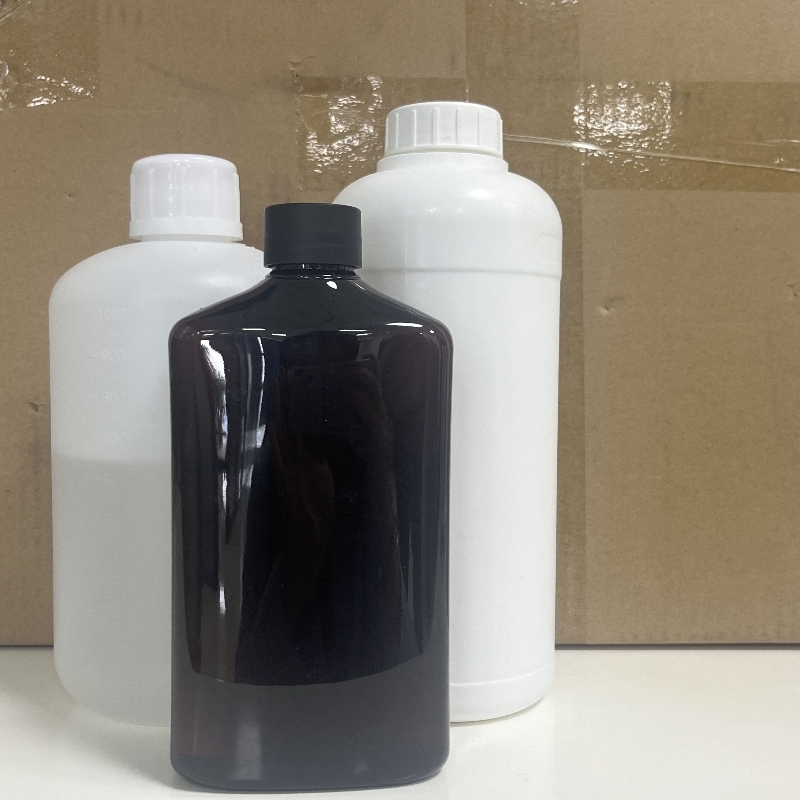-
Categories
-
Pharmaceutical Intermediates
-
Active Pharmaceutical Ingredients
-
Food Additives
- Industrial Coatings
- Agrochemicals
- Dyes and Pigments
- Surfactant
- Flavors and Fragrances
- Chemical Reagents
- Catalyst and Auxiliary
- Natural Products
- Inorganic Chemistry
-
Organic Chemistry
-
Biochemical Engineering
- Analytical Chemistry
- Cosmetic Ingredient
-
Pharmaceutical Intermediates
Promotion
ECHEMI Mall
Wholesale
Weekly Price
Exhibition
News
-
Trade Service
Recently, STING agonists have ushered in many new developments : At the end of July, F-star Therapeutics announced that its second-generation STING agonists had obtained positive data in the first human test; on May 21, STING agonists introduced by Jiahe Biotechnology The drug was approved for clinical use in China; on May 18, two papers published in the sub-Journal of "Science" showed that STING agonists also showed the potential to prevent new coronavirus infections
Recently, STING agonists ushered in many new developments
The full name of STING in Chinese is interferon gene stimulating protein, and it was first reported in 2008
The full name of STING in Chinese is interferon gene stimulating protein, which was first reported in 2008
As a target discovered only more than 10 years ago, why can STING stand out among many targets and become the focus of attention of biomedical companies? At present, what are the types of innovative therapies developed for STING targets? Which diseases are they expected to treat?
STING and disease
STING and diseaseBefore getting to know STING, let's first understand the "dangerous" early warning signals for identifying abnormal cells in the human body
In mammalian cells, this induction of DNA is mainly mediated by the cGAS-STING signaling pathway
This induction of DNA is mainly mediated by the cGAS-STING signaling pathway
▲ cGAS-STING signal pathway (picture source: reference [2])
▲ cGAS-STING signal pathway (picture source: reference [2])Studies have found that STING is also widely expressed in a variety of cell types in the tumor microenvironment , and has the unique ability to trigger the balanced secretion of type I interferons and pro-inflammatory cytokines
STING is also widely expressed in multiple cell types in the tumor microenvironment
In addition to tumors, STING-mediated signaling pathways are also closely related to autoimmune diseases and inflammatory diseases
STING-mediated signaling pathways are also closely related to autoimmune diseases, inflammatory diseases, etc.
In view of these findings, the STING signaling pathway has become a promising target for researchers to develop new therapies for the treatment of cancer and inflammatory diseases
STING agonists: potential new tumor immunotherapy
STING agonists: potential new tumor immunotherapyCurrently, immune checkpoint inhibitors such as anti-PD-1/L1 antibodies are facing some challenges in tumor treatment, such as some patients failing to respond or recurrence after treatment
The first generation of STING agonists that entered drug development were synthetic cyclic dinucleotides (CDNs), and many of them have entered clinical trials
The first generation of STING agonists that entered drug development were synthetic cyclic dinucleotides (CDNs), and many of them have entered clinical trials.
▲Development strategy of STING agonist (picture source: reference [1])
▲Development strategy of STING agonist (picture source: reference [1])However, the first-generation STING agonist has the limitations of intratumoral administration, which limits its scope of application
For example, SB11285 developed by F-star Therapeutics is a second-generation STING agonist
Unlike the first generation of STING agonists, SB 11285 can be delivered systemically, allowing the drug to be delivered to inaccessible tumors, and may promote the migration of activated immune cells from the periphery to the tumor lesions
It is also worth mentioning that SYNB1891 developed by Synlogic.
SYNB1891 is a non-pathogenic E.
In China, many companies, including Jiahe Biological, Haihe Pharmaceutical, and Dino Pharmaceutical, are also developing STING agonists
In China, many companies including Jiahe Bio, Haihe Pharmaceutical, Dino Pharmaceutical, etc.
are also developing STING agonists
According to a review published in Nature in 2019, in the field of oncology, the biggest development prospect of STING agonists is to be used in combination with other tumor immunotherapy drugs to enhance the anti-tumor effect through the combination of innate immunity and a variety of complementary immunotherapies
.
From has entered clinical development STING agonist view, development program comprises substantially combination with PD-1 / L1 inhibitor, CTLA-4 inhibitors and the like
.
▲Some STING agonists in clinical trials (picture source: reference [1])
▲Some STING agonists in clinical trials (picture source: reference [1])STING inhibitor
STING inhibitor Another development direction of STING targeted drugs is autoimmune diseases and inflammatory diseases
.
Different from the development of STING agonists in the field of tumor research, the development potential of STING in autoimmune diseases and inflammatory diseases is mainly inhibitors and antagonists
.
This research field has also attracted the attention of many biomedical companies including Bayer and Novartis
.
IFM Therapeutics (hereinafter referred to as "IFM" company) is a biomedical company that develops small molecule drugs targeting the innate immune system.
The STING signaling pathway is one of the company's important research directions
.
Public information shows that IFM has developed small molecule antagonists and inhibitors for the abnormal inflammatory response of the innate immune system to solve a series of indications including rare diseases, autoimmune diseases, fibrosis and neurodegenerative diseases.
.
Currently, the company has two projects under development: one is an oral STING small molecule antagonist, and the other is a cGAS small molecule inhibitor
.
The drug candidates developed by IFM have been favored by many large pharmaceutical companies
.
In September 2019, Novartis reached a research and development agreement with IFM Due, a subsidiary of IFM , to jointly develop a series of innovative immunotherapies that inhibit the cGAS/STING signaling pathway to treat a variety of severe inflammation and autoimmune diseases
.
Previously, Bristol-Myers Squibb also reached a cooperation with IFM and obtained all the rights and interests of two innate immune drugs developed by the latter, one of which is a STING agonist
.
Curadev is another company that develops STING targeted therapy to treat autoimmune or inflammatory diseases
.
The small molecule STING project developed by the company aims to discover and develop STING inhibitors to regulate immune responses related to various spontaneous inflammatory diseases
.
In March 2020, Bayer and Curadev reached a research cooperation and license agreement to develop new STING antagonists for the treatment of patients with lung disease, cardiovascular disease and other inflammatory diseases
.
Image source: 123RF
In addition, STING targeted therapy also has the potential to fight viral or bacterial infections
.
Studies have found that treatment with STING agonists in mice infected with hepatitis B virus can reduce viral load
.
The latest research published in Science Immunology recently showed that STING agonists have also shown the potential to prevent new coronavirus infections in in vitro and animal studies
.
In general, the development of STING targeted therapy is still in the early stage of research
.
It is hoped that with the development of research, STING targeted therapy can usher in more new advances and breakthroughs, and bring new weapons to mankind to overcome diseases as soon as possible
.
references:
references: [1] Afsaneh Amouzegar, et al.
(2021).
STING Agonists as Cancer Therapeutics.
Cancers, 13(11), 2695.
https://doi.
org/10.
3390/cancers13112695
(2021).
STING Agonists as Cancer Therapeutics.
Cancers, 13(11), 2695.
https://doi.
org/10.
3390/cancers13112695
[2] Motwani, M.
, et al.
(2019).
DNA sensing by the cGAS–STING pathway in health and disease.
Nature Reviews Genetics.
doi:10.
1038/s41576-019-0151-1
, et al.
(2019).
DNA sensing by the cGAS–STING pathway in health and disease.
Nature Reviews Genetics.
doi:10.
1038/s41576-019-0151-1
[3]Sheridan, C.
(2019).
Drug developers switch gears to inhibit STING.
Nature Biotechnology.
https://doi.
org/10.
1038/s41587-019-0060-z
(2019).
Drug developers switch gears to inhibit STING.
Nature Biotechnology.
https://doi.
org/10.
1038/s41587-019-0060-z
[4]Ma R, Ortiz Serrano TP, et al.
(2020).
The cGAS-STING pathway: The role of self-DNA sensing in inflammatory lung disease.
Nature Reviews Immunology.
doi: 10.
1096/fj.
202001607R.
(2020).
The cGAS-STING pathway: The role of self-DNA sensing in inflammatory lung disease.
Nature Reviews Immunology.
doi: 10.
1096/fj.
202001607R.







